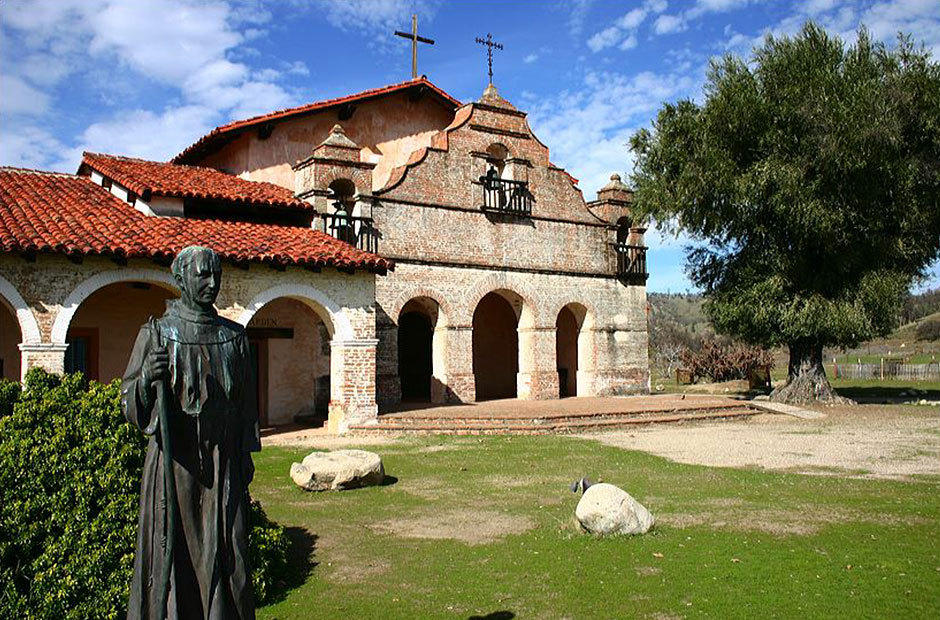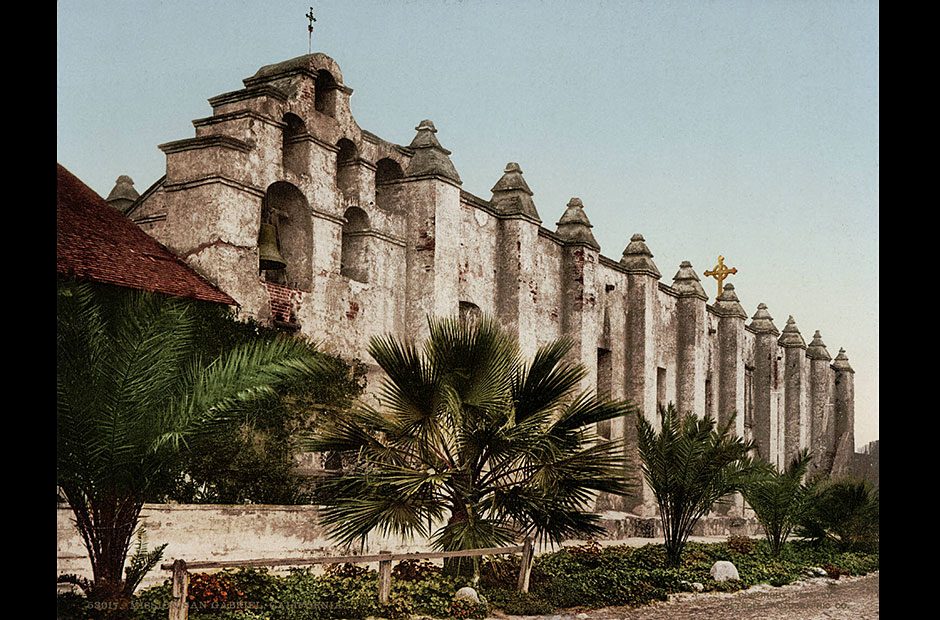Junipero Serra and the California missions
The Enlightenment cabinets led by Floridablanca and Campomanes set forth a major shift in the attitude of Spain towards its American possessions. The imperial policy of the Habsburgs gave way to attempts at establishing a global commercial network, which required new strategies for expansion that differred markedly from those that had been previously employed. Missions and pueblos now became particularly relevant as pieces in a global strategy directed from Madrid. It is in this context that the role of Junípero Serra as founder of the California missions must be understood.
The coast of California had been explored and charted by Sebastián Vizcaíno in 1602 and, even earlier, by Juan Rodríguez Cabrillo (1543) and possibly by English privateer Francis Drake (1579). In spite of this, California remained neglected for almost two hundred years. The main obstacle for the settlement of California was its isolation and difficulty of access both by sea – since it was far removed from the Mexican ports and the sea currents were unfavorable – and by land, which required crossing the unforgiving Sonoran desert.

The colonization of Baja California had already been carried out by the Society of Jesus. After their expulsion by Charles III, the Franciscans, and among them Friar Junípero Serra, would be tasked with taking care of the lands and souls in the new territories.


Majorca-born Franciscan friar Junípero Serra (1713-1784) established the California network of missions and personally founded nine of them. Several major cities in California can trace their origin directly to Father Serra, including San Francisco, San Diego, Monterey and Santa Barbara.

The 1775 Juan Bautista de Anza expedition managed for the first time to communicate the Tubac presidio in Arizona and the California missions, thus opening the land route that made large-scale settlement of colonists in California possible. The opening of this route was driven by the 1773 Representación, a document directed to the Viceroy in Mexico in which Father Serra denounced the abuses of the governor of California and the state of need to which both natives and the mission fathers had been reduced.

Mission San Diego de Alcalá, founded in 1769, was the first of Father Junípero Serra’s missions, and later became the city of San Diego.

Mission San Carlos Borromeo de Carmelo, established in 1770, was the second one to be founded and was associated to the Monterey Presidio, the capital of California until 1848. By securing the ports of San Diego in the south and Monterey in the north and establishing missions next to them the way was opened for the founding of missions in the territory lying in between.

Mission San Diego de Alcalá, founded in 1769, was the first of Father Junípero Serra’s missions, and later became the city of San Diego.

Missions San Antonio de Padua, San Gabriel Arcángel and San Luis Obispo de Tolosa were the next three of Father Serra’s foundations, and covered the ground between Monterey and San Diego.


At the time of his death in 1784, Junípero Serra had founded nine missions in California. Over the following years, the number was increased to twenty-one under the direction of his successors, the first of which was his disciple Francisco Palou. A large number of these missions have been preserved, and many of them have laid the foundations for major cities: San Francisco, San Jose, Monterey, Santa Barbara, Los Angeles or San Diego.



